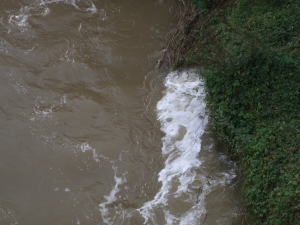Abstract
Background
A chemical plant manufacturing pesticides has been operating since the 1950’s in the Sacco River Valley (Central Italy). In 2005, high beta-hexachlorocyclohexane (Beta-HCH) concentrations were found in milk of cows raised and fed near the river. We report the results of a biomonitoring study conducted in this region to evaluate the body burden of Beta-HCH and to identify the determinants of the human contamination.
Methods
We defined four residential areas by their distance from the chemical plant and the river, and selected a stratified random sample of 626 people aged 25–64 years. We evaluated the association, in terms of the geometric mean ratio (GMR), between several potential determinants and Beta-HCH serum concentrations using multivariate linear regression analysis.
Results
Two hundred forty-six serum samples were analysed to assess Beta-HCH levels (mean concentration: 99 ng/g lipid; Standard Deviation: 121; Geometric Mean: 60.6; Geometric Standard Deviation: 2.65). We found a strong association between Beta-HCH and living in the area close to the river (GMR: 2.00; 95%CI: 1.36-2.94). Beta-HCH levels were also associated with age, level of education, use of private wells and consumption of local food.
Conclusions
The results suggest that people living close to the river may have been contaminated by Beta-HCH, most likely through water from private wells and privately grown food. A programme of epidemiological and clinical surveillance is on-going on this population.
The complete version of this article can be found at: http://www.ehjournal.net/content/12/1/57
